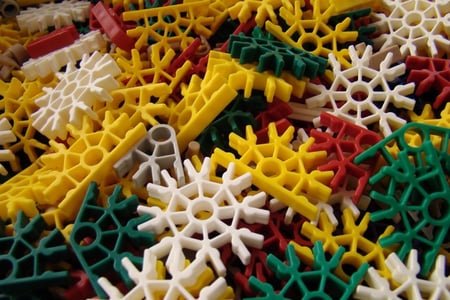While plastic has been used to create a vast number of consumer products, the material’s potential uses expand far beyond children’s toys or storage containers. Today, industry experts rely on plastics to create everything from automotive parts to synthetic human body parts.
Creating products like these necessitates the utmost care and precision. Plastic molding ensures optimal performance when manufacturers begin fabricating these critical components.
Specifications, requirements, and restrictions vary between industries and applications. For this reason, there are a number of plastic molding options available, each with their own benefits and features. An application’s particular specifications often determine which type of molding process is best for a certain product. In this article, we’ll focus on injection molding and compression molding. We highlight some of the other types of molding in “Plastic Molding 101: Understanding the Types”
What Is Injection Molding?
During fabrication, melted plastic is injected into a stainless steel mold to take on the required shape. The mold is outfitted with various customized cavities to form the product.
When the melted plastic has been injected, the material begins filling out the cavities and the rest of the mold. The products are left to cool and are later ejected by pins.
Benefits of Injection Molding
 Organizations requiring intricate products or high-volume runs often turn to plastic injection molding because the process makes it simple to achieve high levels of production while keeping the overall costs quite low. Once production begins, the cost per parts drops significantly. This process is also considered to be the most versatile of the molding processes currently available. It makes it easy to create products of all shapes, styles and sizes. If a project requires high degrees of customization, it’s relatively simple to change a number of factors concerning production. Manufacturers use a variety of plastic resins, additives, and finishes to make customization simple.
Organizations requiring intricate products or high-volume runs often turn to plastic injection molding because the process makes it simple to achieve high levels of production while keeping the overall costs quite low. Once production begins, the cost per parts drops significantly. This process is also considered to be the most versatile of the molding processes currently available. It makes it easy to create products of all shapes, styles and sizes. If a project requires high degrees of customization, it’s relatively simple to change a number of factors concerning production. Manufacturers use a variety of plastic resins, additives, and finishes to make customization simple.
Other benefits of injection molding include:
- High level of versatility and customization
- Low production costs
- Efficient and reliable processes
- Strong and durable end products
Injection Molding Applications
Because of its versatility, injection molding is regularly used for a variety of applications. Everything from automotive parts to small, intricate pieces of surgical equipment can benefit from the process. Some other examples of applications involve:
- Food and beverage packaging
- Aerospace components
- Automotive products
- Window and door components
- Avionics components
- Cable assemblies
- Point of purchase display components
- Encapsulations
- Engineering prototypes
- Instrumentation
- Medical and dental products
- Medical laboratory testing components
What Is Compression Molding?
The compression molding process involves heating a mold and placing plastic inside. After that, the mold is closed to heat and compress the plastic into the desired shape. The heating process—also known as curing—ensures the final product maintains integrity and shape. Once cooled, products are removed from their molds.
 Benefits of Compression Molding
Benefits of Compression Molding
Like injection molding, compression molding is considered to be cost-effective and highly efficient. The process is simple and, compared to other production techniques, is often an inexpensive way to create components. Compression molding is also quite versatile and used to create products of varying intricacies, lengths, and thicknesses.
Since the process often employs high-strength materials, many products created via compression molding are more sturdy and resilient than those manufactured using other molding processes. It produces minimal waste, making it better for the environment and for customers’ budgets.
Compression Molding Applications
Compression molding is ideal for manufacturing stronger, more durable parts. Today, the process is often central to the creation of automotive and appliance parts. Other applications include:
- Clothing fasteners
- Body armor
- Circuit breakers
- Stove knobs
- Plastic dinnerware
- Electrical switchgear
- Encapsulating electronic components
Contact Us for More Details About Plastic Injection Molding
If you’re interested in learning more about various plastic injection molding processes, check out our eBook, Plastic Injection Molding 101. We explain the details behind selecting resin materials, the price of manufacturing molds, and different varieties of plastic molding methodologies.
For more information or to get started on a project, contact a member of our team today.









Comments